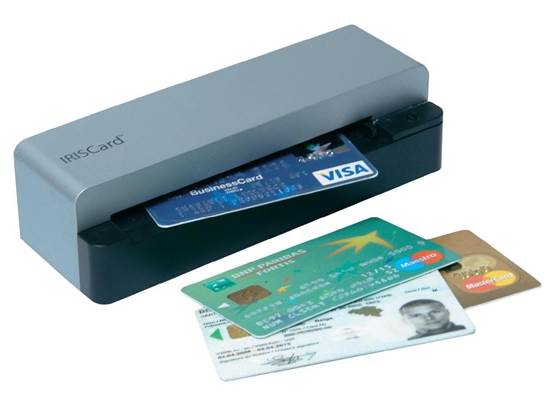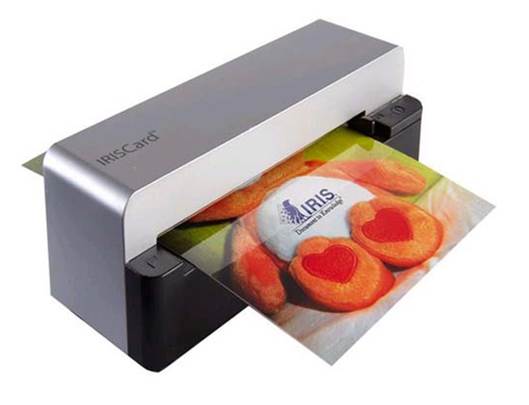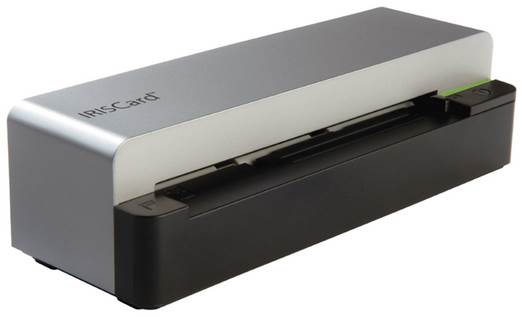Business cards rather than playing
cards have been occupying Michael F. of late
Despite Bluetooth offering the wireless
streaming of data over short distances, many people still prefer to hand out
business cards, engraved with personal details, like sweets even, ironically,
when attending an event promoting Bluetooth technology. Dealing with the
plethora of cards that can come your way at such events and transferring the
information to a database can be a time consuming operation. Offering to help
with this task, though, is the I RISC card Anywhere 5. Released with the tag
line "You scan, it organizes", this particular kit consists of the
card scanner unit and document management software for either Windows or Mac
platforms.
You also get a standard-to-mini USB lead,
calibration card and cleaning swab (neither of which I have needed to use, as
yet) plus various items of documentation that include a discount voucher for a
future IRIS purchase and a claim form for a free SD card.

IRISCard
Anywhere 5
As its name suggests, the Anywhere 5 is a
portable device that allows you to scan and store business cards while on your
travels, by the simple process of feeding cards into the mouth of the device.
It's 512MB of flash memory gives it the ability to store over 2,500
A Scans and data cards as, on average, a
single card image takes up just 205K when scanned at 300dpi. If more storage is
required, there the options to insert an SD card or USB flash stick to increase
capacity. While it's perhaps a little too large (at 157.4 x 43 x 54.5mm) for
the pocket, it could easily be carried in a bag.
This card scanner is not a TWAIN device, it
should be regarded as a USB storage unit with scanning capabilities. Stored
content will need to be transferred to a database, via the supplied USB lead,
using the Cardiris software that forms part of the package. It allows you to
transfer individual cards manually, or you can set up the software to
automatically download any new data when the card scanner is attached to a
computer.

Sometimes
editing will be required to correct errors, but generally these instances were
the result of layout issues
By default the Cardiris software brings in
the scanned image, though, which is not what you really need. In order for the
necessary data to be extracted, the card needs to be recognized. The data is
then laid out in the relevant fields alongside the scanned image. There is a
setting that can be turned on so that the necessary recognition is carried out
automatically when images are downloaded from the card scanner. To avoid
confusion, due to different international settings, you can select the country
of origin for batches of cards from a drop down pick list.
On the whole the Cardiris software made a
reasonable stab at extracting data from a variety of business cards in both
landscape and portrait orientation. The data can be exported to other
applications such as Microsoft Excel, Outlook, Palm Desktop and Google
Contacts. You can also convert data to generic formats such as CSV and VCF.

IRISCard
Anywhere 5 Business Cards Scanner
Sometimes editing will be required to
correct errors, but generally these instances were the result of layout issues.
I did come across one strange instance when two cards from different
individuals at the same company were recognized. Although the layout of both
cards was the same, Cardiris was only able to extract the person's name from
one card. All the other information was correctly identified. I have yet to get
to the bottom of this anomaly
|
Details
- Price: $131
- Manufacturer: IRIS
- Website: www.irislink.com
- Required spec: Pentium processor, 512MB
of RAM, 300MB HDD space, Windows XP or later/PowerPC G3 or Intel
processor, 160MB HDD space, OS X 10.4 or later
|